What it's like to operate a new drone being trialled at a Singapore Armed Forces exercise in the US
CNA got the chance to test out a Skydio X10 drone - one of three off-the-shelf brands participating in this year's Exercise Forging Sabre.
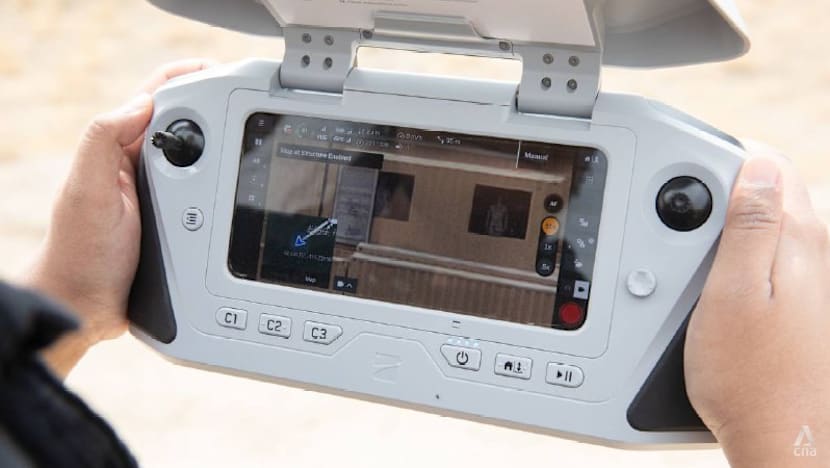
CNA journalist Natasha Ganesan operating the Skydio drone at the Singapore Armed Forces' Exercise Forging Sabre in Saylor Creek Range in Idaho, United States on Sep 9, 2025. (Photo: CNA/Ili Mansor)

This audio is generated by an AI tool.
IDAHO, United States: Standing on sandy ground in the Idaho landscape in northwestern America, with a slight wind picking up around me, I watched intently as a Republic of Singapore Air Force (RSAF) soldier showed me the ropes of operating a drone.
There were essentially two sets of controls. One to fly the Skydio X10, an American-manufactured off-the-shelf drone, and another to control the camera installed in it.
There was a right joystick on the controller to manage the drone's lateral movements, and one on the left to adjust its height. There were also two "wheels" at the top of the controller - one to pan the camera up and down while the other was a zoom function.
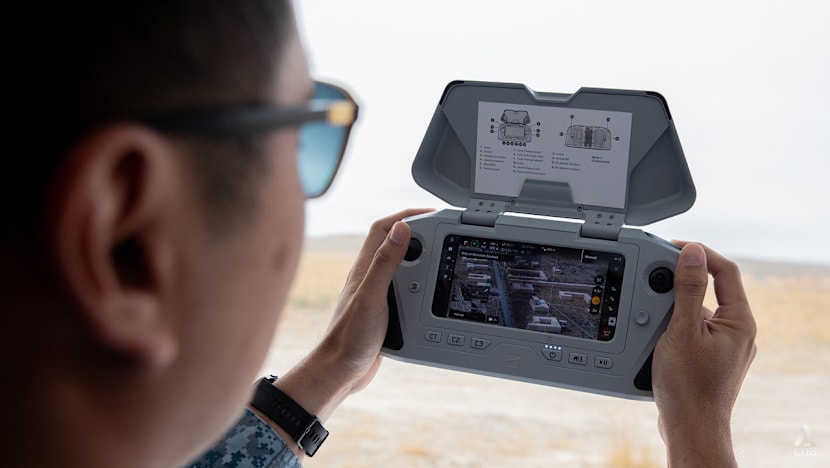
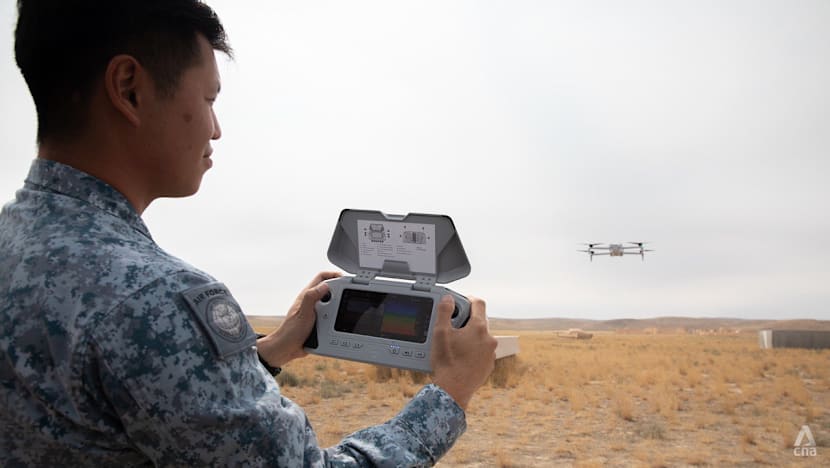
At this point, it felt like a lot to remember, and as someone bad with directions, navigation was not exactly my cup of tea.
Nevertheless the controller found its way into my hands, and to me at least it came across as no different from a gaming device.
Any initial hesitation faded away as I quickly realised it was pretty easy to manoeuvre the drone. The drone operator instructing me, however, reminded me to be gentle when using the joysticks and to imagine they were made of glass.
At any time, I could simply let go of the controls and the drone would stay aloft and suspended.
Emboldened by now, I made the drone spin 360 degrees, by pushing it up further into the sky and turning it at the same time.
After briefly trying out the camera functions, my hands-on experience with the drone came to an end - fleeting but fun to say the least.
The Skydio X10 is among three types of commercially available drones being trialled at Exercise Forging Sabre - a Singapore Armed Forces (SAF) biennial drill in the United States.
Its 10th edition, held at the Mountain Home Air Force Base in Idaho state, kicked off on Sep 6 and will run until Sep 21.
Unmanned aerial systems (UAS) such as drones feature more heavily this time, with the SAF taking lessons from recent conflicts around the globe.
The number of drones involved has more than doubled to 24, from 11 in the previous exercise in 2023.
Of these, 18 are off-the-shelf drones: Four Skydio X10, four Archer drones by Neros and 10 Spirit drones by Ascent. The other two are American manufacturers as well.
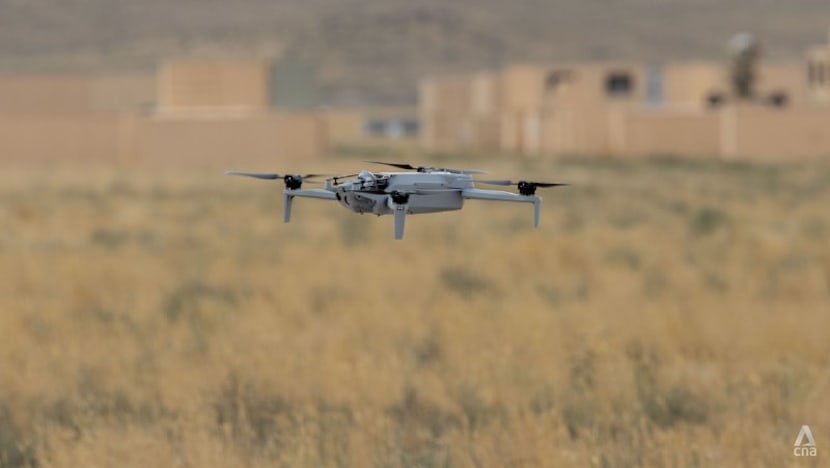
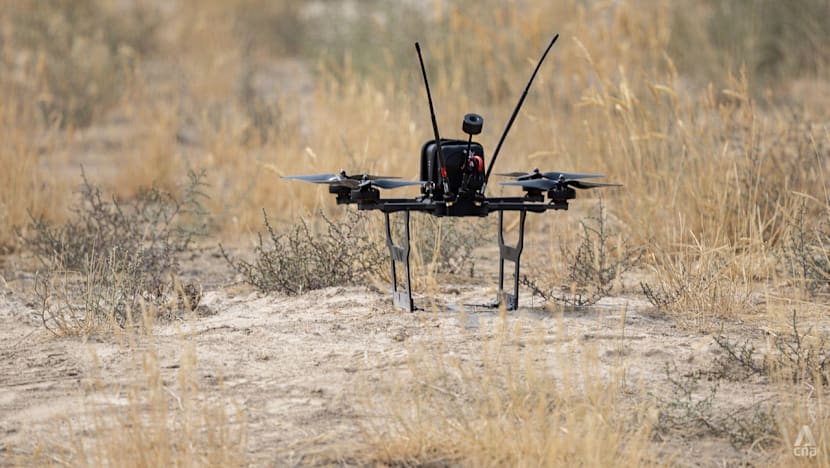
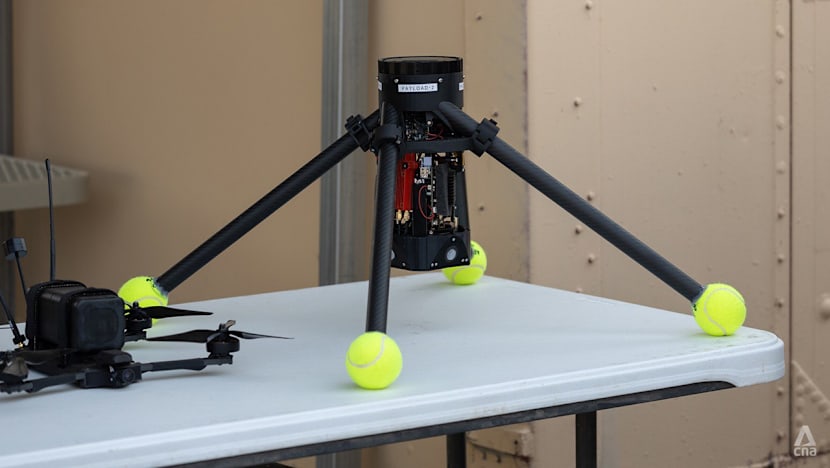
JAMMING RESISTANT
The Skydio drones have a maximum takeoff weight of 2.49kg. They can ascend at a maximum speed of about 20kmh, and descend at about 14kmh.
These drones are capable of avoiding obstacles and navigate autonomously in GPS-denied environments. This refers to locations where signals from Global Positioning System satellites cannot be reached.
The obstacle-avoidance capability allows operators to focus more on what they need to see on the battlefield, rather than flying the drone itself, said Lieutenant-Colonel Tay Cheng Chuan, commanding officer of a newly established drone unit in the RSAF.
Known as Drone Rapid Operationalisation, Integration and Deployment (DROID), it comes under the air force's UAS Warfare and Tactics Centre.
It researches, experiments and trials small unmanned aerial vehicles for SAF operations. Both the unit and the UAS centre were only formally inaugurated in late July.
The Archer drones meanwhile are first-person view systems, resistant to communications jamming - where wireless communications are deliberately blocked or interfered with. They too can operate in GPS-denied environments, and can be flown at speeds of more than 120kmh.
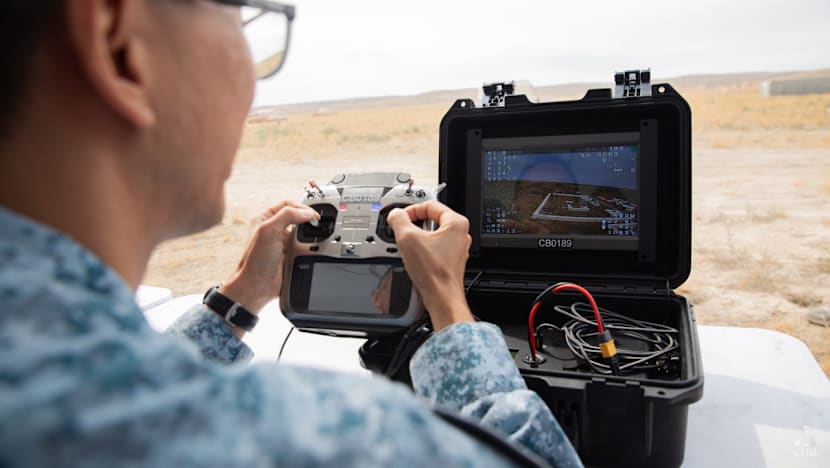
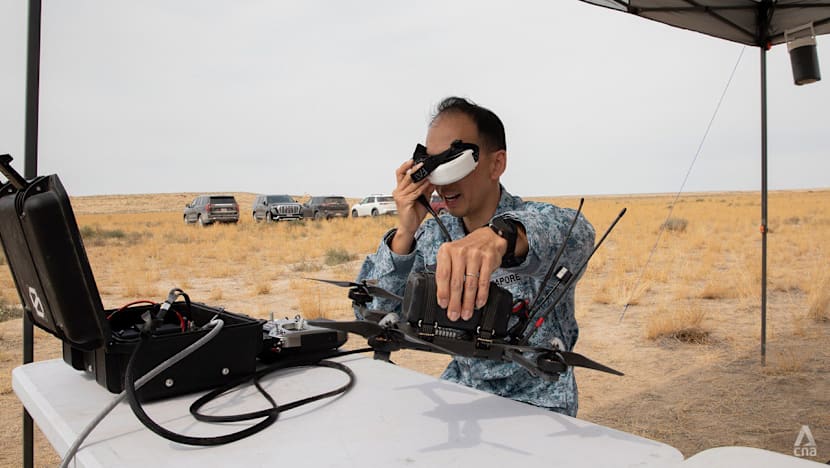
Elsewhere the Spirit drones at Exercise Forging Sabre have been modified with an algorithm developed by the Defence Science Technology Agency (DSTA) under the Ministry of Defence, to perform autonomous navigation as well as search for targets.
This is the only drone among the three to have undergone modification at present.
The Spirit's modular shape also lets its payload or "autonomous brain" be designed separately before being fitted back into the drone.
The Spirit drone is also capable of autonomous swarming to detect objects of interest, said LTC Tay. Swarming involves multiple drones working together to communicate among themselves and conduct searches autonomously.
On why these three drones were picked, DSTA's head of UAS innovation Jeremy Wong said each plays a different role based on their physical characteristics and technical specifications.
He added that the three formed a "good balance" in their mix of capabilities.
"We can perform search and locate with a certain drone; we can perform high-speed chases with another … This mix affords us the flexibility."
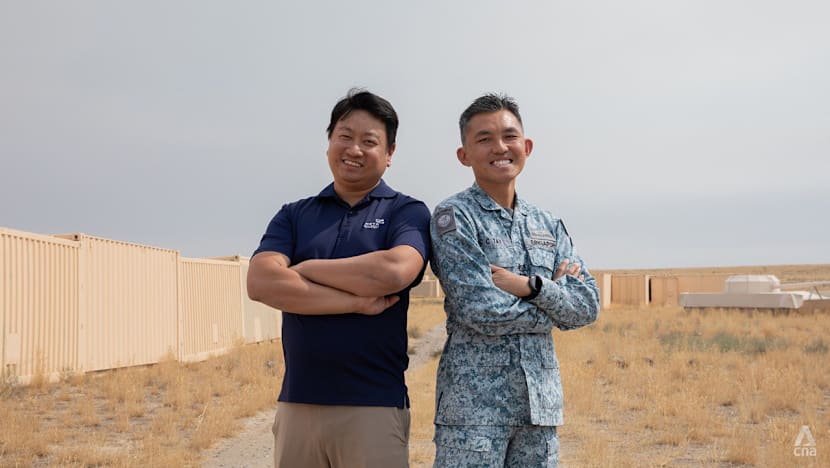
Mr Wong said the focus for the team overseeing the drones was to integrate them as best as possible into the SAF's warfighting capabilities.
"While we remain cognisant of the environment, we cannot choose the environment," he said. "(We) will need to employ these systems to the maximum effectiveness in whichever environments they are operated in."
















